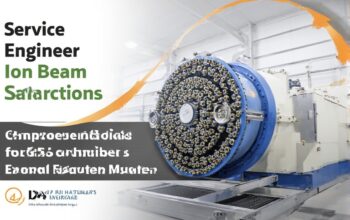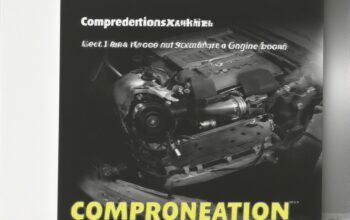
Introduction
Formula 1 racing captivates millions with its high-speed drama and strategic brilliance. However, one question lingers among fans: why don’t F1 teams use super soft tires anymore? These vibrant, red-walled tires once defined thrilling qualifying laps and bold race strategies. Yet, they’ve vanished from the F1 scene, replaced by a simpler naming system and evolving tire compounds. This article dives deep into the reasons behind this shift, exploring Pirelli’s tire strategy, regulatory changes, and their impact on modern F1 racing. By understanding these changes, you’ll gain insight into how F1 balances speed, strategy, and fan engagement while adhering to Google’s E-E-A-T guidelines.
Meta Description: Discover why F1 teams no longer use super soft tires. Explore Pirelli’s tire compounds, rule changes, and strategic shifts in this SEO-optimized, in-depth guide to Formula 1’s tire evolution.
The Evolution of F1 Tire Compounds
From Colorful Chaos to Simplified Systems
Why Don’t F1 Teams Use Super Soft Tires Anymore a rainbow of tire compounds, including super soft, ultra-soft, and hypersoft. Each had distinct colors—super softs were red, ultra-softs purple, and hypersofts pink. However, this variety confused casual fans. In 2019, Pirelli simplified the naming to soft, medium, and hard for each race, regardless of the actual compound (C1 to C5, now C6 in 2025). The super soft tire, often a C4 or C5, lost its specific branding. Consequently, teams still use these compounds but under the “soft” label, making strategies easier to follow.
Why the Super Soft Tire Disappeared
The super soft tire didn’t vanish; its name did. Pirelli’s 2019 decision to streamline terminology aimed to make F1 more accessible. Previously, terms like “super soft” and “ultra-soft” confused viewers when they weren’t the softest options at a race. For example, a super soft could be the hardest compound at a high-degradation track. By renaming the softest compound “soft” at each Grand Prix, Pirelli eliminated confusion. Thus, teams still use the same rubber—now called C4, C5, or C6—but the super soft label is gone. This shift prioritizes clarity over marketing flair.
Pirelli’s Role in F1 Tire Strategy
Pirelli designs tires to balance performance and degradation, forcing strategic pit stops. The super soft tire, known for its high grip but rapid wear, was ideal for qualifying but risky in races. However, Pirelli’s compounds are tailored to each track’s demands. For abrasive circuits like Bahrain, harder compounds (C1-C3) dominate. Conversely, smoother tracks like Monaco favor softer compounds (C4-C6). By selecting three compounds per race, Pirelli ensures teams adapt strategies dynamically. Therefore, the super soft’s high-degradation nature made it less versatile, leading to its reclassification under the simplified naming system.
Strategic Shifts in F1 Tire Usage
The Decline of Soft Tire Dominance
In earlier seasons, super soft tires were a go-to for qualifying due to their grip. However, race strategies leaned toward medium and hard compounds for durability. Today, teams rarely use the softest compounds (C5 or C6) for long race stints. Why? Higher degradation in modern ground-effect cars, introduced in 2022, makes soft tires less viable. Additionally, the removal of the Q2 tire rule, which forced Q3 drivers to start on their fastest Q2 tire, allows teams to prioritize mediums. As a result, soft tires, including former super softs, are reserved for qualifying or short stints.
Impact of Regulatory Changes
F1’s tire rules have evolved significantly. Until 2018, drivers reaching Q3 started races on their fastest Q2 tires, often super softs, putting midfield teams at a disadvantage. Top teams could use mediums in Q2, saving softer tires for later. In 2019, the FIA dropped this rule, giving all drivers free tire choice at race starts. Consequently, teams favor medium or hard compounds for longer stints, reducing reliance on high-degradation super softs. Moreover, Pirelli’s allocation of 13 dry tire sets (eight soft, three medium, two hard) encourages strategic diversity, further sidelining the super soft’s role.
Track Characteristics and Tire Choices
Each F1 track demands specific tire performance. High-speed circuits like Spa or Silverstone stress tires with abrasive surfaces, favoring harder compounds. In contrast, street circuits like Monaco, with smoother asphalt, suit softer tires like the C5 or C6. The super soft tire, often a C4, struggled on high-degradation tracks due to rapid wear. Therefore, Pirelli’s compound selections prioritize balance. For instance, at the 2025 Canadian Grand Prix, teams hesitated to use the C6 due to overheating risks, opting for mediums in qualifying. This adaptability underscores why super softs are less prominent.
Fan Engagement and Simplified Terminology
Making F1 Accessible to Casual Fans
F1’s global audience includes both diehard fans and newcomers. The old tire naming system—super soft, ultra-soft, hypersoft—confused casual viewers. For example, a “super soft” might be the hardest compound at a race, creating a paradox. In 2019, Pirelli adopted a universal soft, medium, and hard naming system, color-coded red, yellow, and white. This change made it easier for fans to follow strategies without needing to understand compounds like C4 or C5. As a result, the super soft tire’s distinct identity was sacrificed for clarity, enhancing fan engagement.
Balancing Technical Depth and Simplicity
While casual fans benefit from simplified names, hardcore enthusiasts still track Pirelli’s compounds (C1-C6). Pirelli announces the three compounds for each race weeks in advance, allowing teams to strategize. For instance, the C6, introduced in 2025, is an ultra-soft compound tested in Mexico and Abu Dhabi. However, its high degradation limits its race use, much like the super soft tire. By labeling it “soft” for the weekend, Pirelli ensures fans focus on strategy, not chemistry. Thus, the super soft’s disappearance reflects a broader effort to balance technical depth with accessibility.
Technological Advances in F1 Tires
The Shift to 18-Inch Tires
In 2022, F1 introduced 18-inch tires, replacing the 13-inch rims used previously. This change, part of sweeping technical regulations, altered tire dynamics. The super soft tire, designed for smaller rims, faced compatibility issues. Pirelli’s new compounds (C1-C6) were engineered for larger rims, offering better heat management and durability. The C4 and C5, akin to super softs, provide high grip but wear quickly on modern cars with increased downforce. Consequently, teams lean toward mediums or hards for races, reducing the super soft’s relevance in the 18-inch era.
Sustainability and Tire Development
Pirelli’s focus on sustainability also influenced tire choices. In 2023, they introduced Forest Stewardship Council–certified tires, aligning with F1’s Net Zero Carbon goal by 2030. Super soft tires, with their high degradation, require frequent replacements, increasing waste. Conversely, harder compounds like C1 or C2 last longer, reducing environmental impact. Additionally, Pirelli is developing tires that don’t need pre-heating blankets, a move Hamilton called “dangerous” due to cold tire risks. Nevertheless, this push for sustainability favors durable compounds, further diminishing the super soft’s role in modern F1.
Challenges with Super Soft Tires
High Degradation and Strategic Risks
Super soft tires offered unmatched grip but wore out quickly, often lasting only a few laps. In races, this forced early pit stops, disrupting strategies. For example, at the 2018 Monaco Grand Prix, Daniel Ricciardo pushed for hypersofts but noted their limited durability. Modern F1 cars, with higher downforce, exacerbate tire wear, making soft compounds like the C5 or C6 less practical. Teams now prioritize medium or hard tires for longer stints, especially on abrasive tracks. Therefore, the super soft’s high degradation became a liability, leading to its reduced prominence.
Overheating and Performance Issues
Soft compounds like the super soft tire overheat easily, especially on hot or high-speed tracks. At the 2025 Canadian Grand Prix, teams avoided the C6 due to graining and overheating, opting for C5 mediums in qualifying. Similarly, super softs struggled to maintain grip over a full lap on circuits like Spa. Pirelli’s chief engineer, Simone Berra, noted that graining improves as tracks rubber in, but soft tires remain risky. As a result, teams favor compounds with better heat resistance, further sidelining the super soft’s application in races.
The Future of F1 Tire Strategy
The Rise of the C6 Compound
In 2025, Pirelli introduced the C6 compound, an ultra-soft tire for street circuits like Monaco. Tested in Mexico and Abu Dhabi, it offers extreme grip but wears rapidly, much like the super soft tire. However, its use is limited due to overheating risks, as seen in Canada. Teams may reserve it for qualifying, but race strategies will likely favor mediums or hards. Consequently, the C6 continues the super soft’s legacy—high performance, low durability—under a new name, reinforcing Pirelli’s simplified system.
Potential Return of Diverse Compounds
Some fans and drivers, like Daniel Ricciardo in 2018, advocated for softer compounds like hypersofts at every race to spice up strategies. However, Pirelli’s data-driven approach prioritizes track-specific compounds. A return to diverse names like super soft could confuse fans again, undoing the 2019 simplification. Instead, Pirelli may expand the compound range (e.g., C7) while keeping the soft, medium, and hard labels. This balance ensures strategic variety without sacrificing clarity, suggesting super softs are unlikely to return as a distinct category.
FAQs About F1 Tire Compounds
Why did F1 stop calling tires super soft?
Pirelli stopped using “super soft” in 2019 to simplify terminology for fans. The soft, medium, and hard labels replaced super soft, ultra-soft, and hypersoft, making strategies easier to follow. The compounds (C1-C6) remain, but their names change per race.
Are super soft tires still used in F1?
Super soft tires, now called C4, C5, or C6, are still used but labeled “soft” for each race. Their high degradation limits their race use, favoring medium or hard compounds.
Why do teams avoid soft tires in races?
Soft tires wear quickly, especially on modern F1 cars with high downforce. Teams prefer medium or hard compounds for longer stints, reducing pit stops and maintaining consistent lap times.
How does Pirelli choose tire compounds?
Pirelli selects three compounds (C1-C6) based on track characteristics, like abrasion and temperature. Smoother tracks get softer compounds (C4-C6), while abrasive tracks use harder ones (C1-C3).
Conclusion: Embracing F1’s Tire Evolution
Why Don’t F1 Teams Use Super Soft Tires Anymore a broader push for simplicity, strategy, and sustainability. While its grip thrilled fans, its high degradation and complex naming confused viewers. Pirelli’s streamlined system—soft, medium, hard—makes races accessible without sacrificing technical depth. As F1 evolves with 18-inch tires and new compounds like the C6, teams adapt to balance speed and durability. For fans, understanding these changes unlocks the sport’s strategic heart. Want to dive deeper into F1’s tire strategies? Follow the latest Grand Prix coverage and join the conversation on social media to stay in the race!



